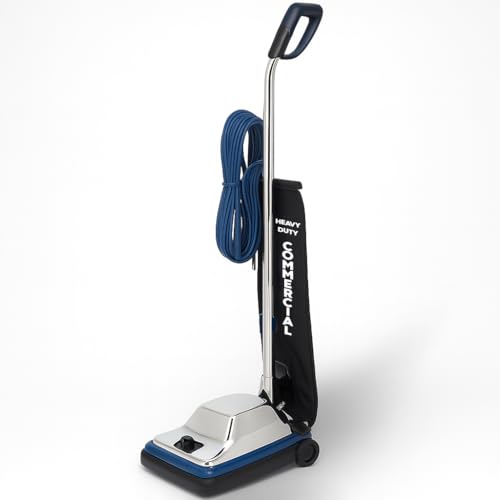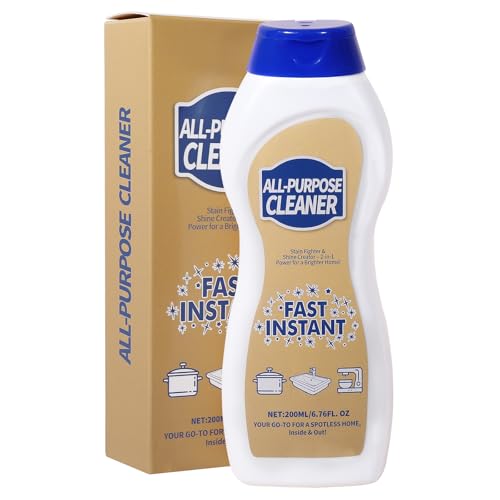Is your Miele vacuum overheating and perhaps even shutting off?
Most of the time, fixing this issue is easier than you think and will only take 1-2 hours of your time!
In this post you will learn:
- Why your Miele vacuum is overheating
- How to fix a Miele vacuum that overheats
- And more!
Why Is My Miele Vacuum Overheating?
Overheating may be caused by a blockage in your Miele vacuum, such as a full dust bag, clogged hose, or debris stuck in the brush roll. It can also be caused by dirty filters, a broken belt or electrical issues. The temperature limiter switch of an overheated Miele vacuum will normally shut the machine off to prevent further damage.
How Do You Fix A Miele Vacuum That Overheats?
First of all, make sure you do the following:
- Turn off your Miele vacuum cleaner
- Unplug it
- Let it cool down for at least 30 minutes.
Miele vacuum cleaners come with reliable protection against overheating, as they feature a temperature limiter switch that automatically shuts off the vacuum if it gets too hot.
Generally, thermal limit switches have a short life cycle, so it’s best to fix whatever is causing your Miele vacuum to overheat ASAP.
You may also notice that your vacuum is showing a red warning light (most Miele vacuums have this light):
When the temperature limiter switch kicks in, your vacuum will simply not work until it cools down, even if the issue itself has been resolved.
Once your vacuum has cooled down, follow the steps below:
1. Empty the Dust Canister or Bag
This seems obvious to some. I get it.
But you’ll be surprised at how many people use the same vacuum bag over and over or only empty the dust canister when it is 100% full!
If you are one of those people (slap on the wrist!), make sure you do this instead, depending on the type of Miele vacuum you own:
- Empty the canister after every single use, or at least before it reaches two-thirds of the canister!
- Change the vacuum dust bag every 3 months. You may need to change the bag more often if you use your Miele vacuum a lot!
Obvious initial signs of a full canister/dust bag include:
- Loss of suction power
- Debris being left behind as you vacuum

2. Remove Clogs
Check for potential obstructions in the hose, vacuum handle or vacuum head.
A blocked hose can impede discharge of the exhaust air from the vacuum cleaner.
To resolve a blockage in the hose or handle:
- Detach the hose/handle from your Miele vacuum
- Use something long like a broom handle to dislodge any clogs present.
You can also wash the hose:
- Fill the sink with enough water to submerge the hose completely
- Add dish soap or mild detergent
- Let the water run through the hose
- Use a cloth to clean the outer part of the hose
- Let the hose dry completely before re-attaching it to your Miele vacuum cleaner
Here is a video from HooverLux Restorations that shows how to wash a vacuum hose:
To remove clogged debris in the vacuum head:
Floor heads mainly get clogged due to long hair wrapping around the brush roll.
When your Miele vacuum brush is not spinning freely, it will put a strain on the vacuum motor, causing the machine to overheat.
- Detach your Miele vacuum floor head
- Turn the floor head upside down and remove the screws
- Remove the case that keeps the brush roller in place
- Grab a pair of scissors and cut through the hair wrapped around the roller brush
- Once all hair and debris have been removed, put the case and the screws back
Here is a video from Bootsowen on how to clean a Miele vacuum head:
3. Pull The Full Length Of The Cable
Miele states that, if you use their vacuums for longer than 30 minutes, you should ensure that the cord is pulled out all the way.
Not doing some can damage your Miele vacuum or cause it to overheat.
Again, let the vacuum cool down after pulling the entire cord out before proceeding.
4. Wash/Replace Filters
Miele vacuums come with a variety of filters, depending on the type of vacuum you own.
The recommendation for when filters should be cleaned varies.
For example:
- The fine dust filter of a Miele stick vacuum needs to be cleaned at least once a month
- The exhaust filter of a Miele robot vacuum needs to be cleaned “as required”
Check your user manual to see if your Miele vacuum filters are washable.
If they are, simply rinse them with water and let them dry completely before use.
Cleaning/Changing Miele Canister Vacuum Filters
For Miele canister vacuums such as Brilliant, Homecare, and Cat & Dog, you will need to take care of the motor protection filter and exhaust filter.
Check your Miele vacuum user manual to see which type of exhaust filter your machine has and how to clean them/replace them:
- AirClean: Change this filter whenever you start a new packet of Miele FilterBags. Every packet of Miele FilterBags come with an AirClean exhaust filter
- Active AirClean 50 (black): Change if the display for the exhaust filter change indicator is fully red. This happens after about 50 hours of operation
- HEPA AirClean 50 (white): Change if the display for the exhaust filter change indicator is fully red. This happens after about 50 hours of operation
Regarding the motor protection filter, you should change this every time you start a new packet of filter bags.
Cleaning/Changing Miele Stick Vacuum Filters
Miele stick vacuums, such as the Triflex Pro and the Triflex Cat & Dog, have a pre-filter, fine dust filter and motor protection filter fitted.
- The pre-filter in located in the dust container and needs to be cleaned whenever required and changed at least once a year
- The fine dust filter is in the dust container and needs to be cleaned at least once a month and changed every 3 years
- The motor protection filter should be cleaned whenever you clean the pre-filter and changed at least once a year
Check your Miele stick vacuum user guide for more details.
Changing Miele Robot Vacuum Filters
Miele robot vacuums, such as the Scout RX3, feature a pre-filter and an exhaust filter.
- The pre-filter needs to be cleaned whenever required and changed at least once a year
- The exhaust filter should be cleaned as required and changed every 50 hours of use
Check your Miele stick vacuum user guide for more details.
5. Inspect The Belt
Your Miele vacuum belt enables the beater brush to spin and collect debris on carpets.
However, if the belt is broken, it can put additional strain on the motor, causing your Milele vacuum to overheat.
Belts do wear out overtime, but can also break due to large debris clogging the brush and putting too much resistance on the belt.
Check your Miele manual to see where your vacuum belt is located.
Inspect the belt and replace if needed, ensuring you purchase the correct belt for your machine.
6. Check For Electrical Problems
If none of the fixes above helped with your Miele vacuum overheating issue, then the problem may be:
- A damaged power cord – Inspect the power cord for loose wires or cracks and stop using your Miele vacuum cleaner if you see any damage. Change the power cord before using your vacuum again
- A broken motor – Unfortunately, this is not something I recommend you replace yourself. Your vacuum will need to be repaired by a professional
Before taking your Miele vacuum to an independent professional, you may want to check if your machine is still under warranty:
If it is, contact Miele and ask if they can fix/replace your vacuum.
What Happens If Your Miele Vacuum Overheats?
When a Miele vacuum overheats, the temperature limiter will automatically switch the vacuum cleaner off to prevent damage and fire hazards. You will not be able to turn the vacuum back on until it has cooled down. Make sure you fix the issue and let the motor cool down for at least 30 minutes before using your Miele vacuum again. If your fix does not solve the issue, contact a professional.
Conclusion
Knowing what to do when your Miele vacuum cleaner overheats can potentially save you hundreds of dollars!
Make sure you act quickly and go through the steps mentioned above.
To recap:
- Empty the dust bug or canister
- Remove clogs from the hose and brush roll
- Clean or replace your filters
- Inspect the belt and replace it if needed
- Replace the power cord
- Call Miele or an independent professional





















